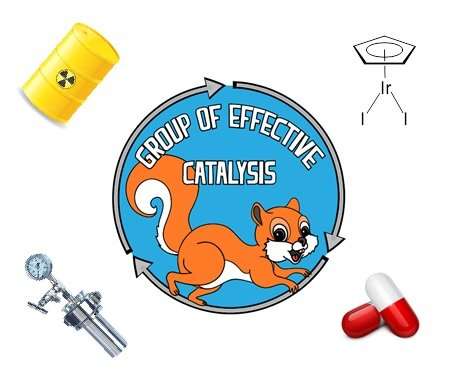Scientists have found a way to create drug molecules from carbon monoxide

Scientists from RUDN University in collaboration with Russian and foreign colleagues have studied reductive amination reactions. The new reactions and catalytic systems based on them have applications in organic synthesis, and could also boost the production of medicinal substances and agrochemicals in the future. The study was published in Organic & Biomolecular Chemistry .
High-performance atom efficient reactions are crucial for sustainable development in modern industry. Atom efficiency of a reaction means that ideally, all the atoms entering a chemical reaction must leave it as part of the desired product. But the world is far from ideal—the number of completely atom effective reactions with a 100 percent yield is very small. For example, in organic synthesis, complex boron hydrides are often used as reducing agents. In practice, 1 kg of the desired product in the reaction produces comparable amounts of solid waste that requires special disposal.
In this sense, hydrogen seems to be an almost perfect reducing agent that is completely absorbed by the reagents. However, pure hydrogen is produced from natural gas as a result of a three-stage synthesis. This is a very energy-intensive process requiring high temperatures (up to 800° C) and additional catalysts. The scientists' idea was to make such a substance into a reducing agent that would not require much energy to be produced and would not create significant waste in amounts difficult to recycle.
Therefore, the researchers suggested using carbon monoxide (CO) as a reducing agent in organic synthesis. Carbon monoxide comes in huge amounts during steel production and is inexpensive.
"At the moment, carbon monoxide is simply burned to carbon dioxide. We suggest using carbon monoxide to carry out important organic synthesis reactions—for example, to synthesize amines, which are present in a significant number of drugs, and other valuable molecules. Carbon dioxide is produced as a by-product, and the industry already knows how to utilize it," says the main author of the study, Dr. Denis Chusov.
The published paper is devoted to catalytic reductive amination with carbon monoxide as a reducing agent in the presence of iridium-based catalysts. Amination, the reaction of introducing an amino group -NH2 (or its derivatives -NHR or -NR2, where R is an organic radical) into organic compounds, is used to create molecules with certain properties. Substituted hydrocarbons are compounds derived from hydrocarbons in which one or more hydrogen atoms are replaced by atoms of other elements. This requires methods to attach groups to the carbon skeleton in strictly defined positions.
The main part of the study published in Organic & Biomolecular Chemistry was carried out by students who had no experience at all. Scientists have shown that complex compounds of iridium with iodine and an organic molecule cyclopentadiene are the most catalytically active (which appears in the acceleration of the reaction). They revealed previously unknown regularities in the course of this reaction, which contributes to its deeper fundamental understanding and more reasonable practical application.
"The developed reaction proceeds at a pressure of 30 atmospheres of carbon monoxide, which is provided by working in autoclaves. Autoclaves may seem difficult to implement at first, nevertheless, there are a lot of processes in the industry that require significantly higher pressures, so there is nothing extraordinary. Moreover, hydrogenation in laboratories is also often carried out in them. By varying the catalyst, we can reduce pressure to atmospheric, but those scientists who have worked with autoclaves prefer them to usual laboratory glassware. Autoclaves are difficult to break, the solvent cannot boil out, the reaction mixture work up is simple," Denis Chusov says.
The reaction catalyzed by iridium with iodine and cyclopentadiene proved to be tolerant to a wide range of functional groups, that is, to be highly selective. Many reagents can carry out the necessary transformation, but they destroy important fragments of the molecule in the process, which means that they show a lack of tolerance. In such cases, one has to extend the synthesis of the desired molecule, introduce additional protecting groups, carry out the reaction, and then remove the protective groups. As a result, the production of valuable molecules becomes more labor-intensive, and the cost of the final product and the amount of waste increase. In the future, scientists are planning to focus on using carbon monoxide as a reducing agent in reductive amination reactions in the synthesis of medicinal substances and agrochemicals.
Scientists are planning to continue the research in two directions. One of them is to study the reducing properties of carbon monoxide in order to detect new highly active catalytic systems. Besides, the use of carbon monoxide as a reducing agent enhances new discoveries of the reactions that previously could not be carried out because of the lack of tolerance to functional groups with the existing reduction systems.
More information: Alexey P. Moskovets et al, Reductive amination catalyzed by iridium complexes using carbon monoxide as a reducing agent, Org. Biomol. Chem. (2017). DOI: 10.1039/c7ob01005b
Provided by Peoples' Friendship University of Russia




















